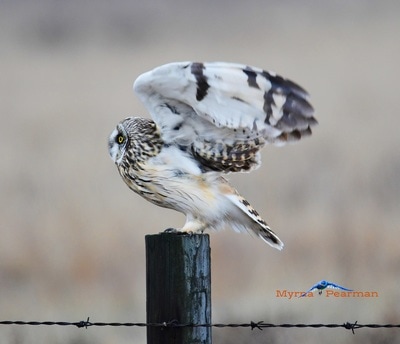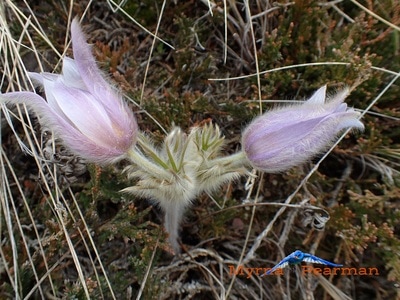 For seven of the past eight years, I have made an annual spring trek to Leader, SK to watch and support my two talented nephews participate in the Sand Hills Music Festival. This festival provides students in the area with the opportunity to perform for an adjudicator as well as for friends and family. Kudos to the students and their teachers, as well as to the festival organizers for another excellent, well-organized event. This year, my good friend and fellow wanderer, Claudia, accompanied me. We set off on Sunday afternoon, with the skies ashen gray and the roads slushy from yet another late April snowfall. We decided to head east from her place on Highway 12, then down the famed crane-viewing Highway 36. Just outside of Stettler, we heard our first meadowlark and after turning south on 36, we were treated to large flocks of stately sandhill cranes. Although they were too far away for good photos, it was a treat to watch them dance and jostle. The next treat was totally unexpected—a short-eared owl sitting on a fencepost. I snapped a couple pictures before it flew off. As we enthused about our good fortune, we passed another one. Another screeching stop and more pictures. Much to our surprise and delight, the owls kept appearing. By the time we turned east on Highway 570, we had spotted 21 owls. Another six on that highway brought the total to 27! The owl sightings were complemented by other spring delights as we made our way east. In addition to the usual and expected species, we were treated to meadowlark serenades as well as sightings of rough-legged and ferruginous hawks, long-billed curlews, sharp-tailed grouse, willets, American avocets and horned larks. We saw great horned owlets in a snag, geese hunkered down on their straw bale nests, American kestrels by the score, and even got to watch some snow geese (which are remarkably tetchy with each other) poke around in shoreline muck. By the time we got home on Thursday afternoon, we had ticked 53 species off our checklist. Between attending festival sessions (where my nephews wowed both the adjudicator and the audience with their musical talent 😊), we joined our friend and fellow photographer, Cathy Cocks, for some prairie rambles on and near her amazing ranch east of Empress. Although it was cold and the wind howled, prairie crocuses—closed tight against the buffeting winds—dotted the hillsides. Dusty red three-flowered avens were just starting to poke their heads above the grass, assuring us that, despite the frigid temperatures, the earth was awakening. Alas, it was too cold for the (rattle, bull, hog-nosed, garter) snakes to be active, so a return trip in warmer weather is anticipated. Southwestern Saskatchewan is an amazing place to explore. I highly recommend booking a few nights at Mammy’s Place, a quaint and rustic little getaway in the ghost town of Estuary. Mammy’s is close to many natural amenities (including the Great Sandhills) and makes for a delightful base from which to explore the area’s magnificent landscapes. 22/4/2017 Juncos - Messengers of Spring! I know that spring has truly arrived when waves of dark-eyed juncos sweep through my yard. Although a few individuals overwinter in Central Alberta each year, it is in late March that these unobtrusive but chatty little sparrows—one of the common birds in North America—start to move through in huge numbers. At this time of year, they are often seen at feeding stations in the company of another early migrating species, the American tree sparrow. Dark-eyed juncos are so named for their dark eyes, but it is their habit of flashing their bright white outer tail feathers that makes them easy to identify, especially in flight. They are also readily identifiable by their distinctive dark hoods and white bellies. Although it is easy to identify these birds as juncos, it is difficult to identify them to subspecies or race because they exhibit so many different plumage variations. Even taxonomists continue to debate species/subspecies/race designations. Two of Alberta’s four races are commonly seen in this area. The most common are the slate-colored juncos, which are slate- or gray colored with white bellies. Less abundant are the Oregon juncos, which can be identified by their distinctively buffy backs and flanks. Juncos are predominantly seed eaters, with insects added to their diet during the spring and summer. They are readily attracted to bird feeding stations, especially during spring and fall migration, where they will dine on sunflower seeds (shelled or unshelled), millet, finely ground corn, canola and nyger seeds. They prefer to feed on the ground, where they hop and scratch amongst the underbrush and fallen seeds looking for morsels. Some individuals will also dine at hopper or tube feeders. Other than when they nest, juncos spend their lives the company of other juncos, moving about in small flocks that feed together during the day and roost together at night. The flocks are controlled by an alpha male, readily identifiable because he flashes his white outer tail feathers or rushes at subordinate birds when he seeks a prime feeding spot. Juncos will soon be leaving the winter flock to nest. Arriving on territory before the females, the males will announce themselves with a loud trilling song (much like a chipping sparrow), often while perched atop a high spruce tree. The males, in addition to spreading their tails and displaying the white outer feathers while trying to impress the female, engage in other interesting courtship behaviours such as hopping up and down, and picking up pieces of nest material or moss. After mating, a pair of juncos will choose a nesting spot, usually on the ground under a stump or overhanging vegetation. The female constructs the nest using her beak to weave materials together and her body to give the nest its shape. Although juncos breed throughout the forested areas of Alberta, their well-hidden nests are hard to find. In all my wanderings, I have found only one junco nest. |
AuthorMyrna Pearman Archives
August 2022
|
All photos and published works on this website are copyright Myrna Pearman unless otherwise noted.
Re-posting these images or publishing is not permitted without Myrna's written consent.
Copyright Myrna Pearman Publishing 2024- Site design and maintenance by Carolyn Sandstrom
Re-posting these images or publishing is not permitted without Myrna's written consent.
Copyright Myrna Pearman Publishing 2024- Site design and maintenance by Carolyn Sandstrom

















 RSS Feed
RSS Feed



30/4/2017
1 Comment